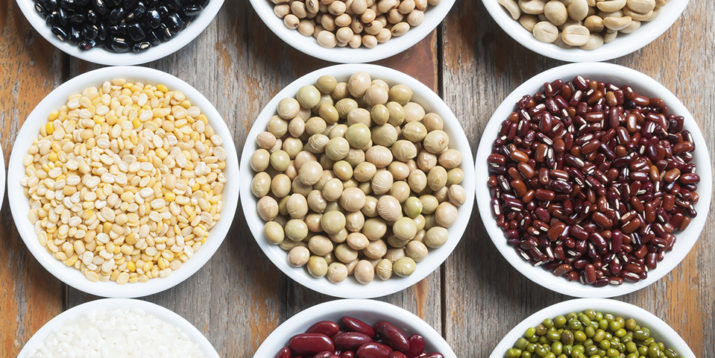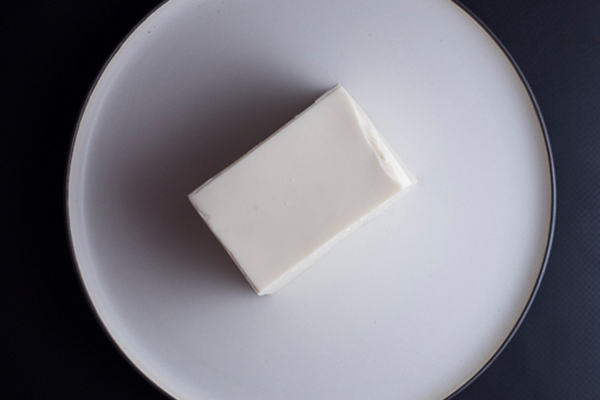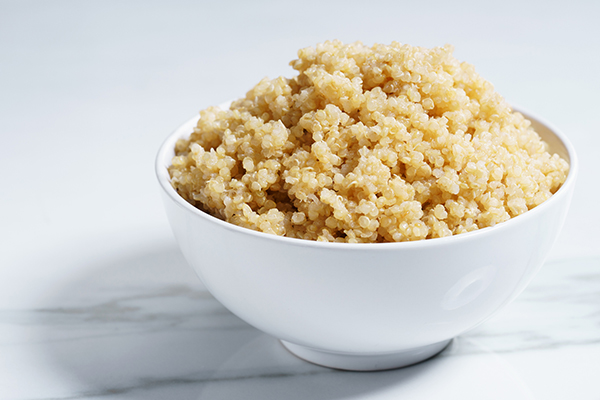10 Great Plant-Based Protein Sources

If you’re vegetarian and you’ve been trying to incorporate good vegetarian protein sources into your diet, you probably have a long list of annoying questions you’re tired of hearing.
And somewhere near the top of that list — probably right behind, “How can you possibly live without bacon?” — is, “Are you sure you’re getting enough protein?”
Possibly followed by, “How do you get protein as a vegetarian?”
They’re valid questions since protein is essential for a healthy diet.
Your body uses protein to help it make hormones, build and repair muscles, and much more.
And yes, meat is a good source of protein — just ask any bodybuilder who practically lives on lean chicken and fish — but there are also plenty of vegetarian protein sources and vegan protein sources that can help you hit your macros.
Pro tip: Beachbody’s performance supplement, Recover, now comes in a plant-based version. The formula is 100-percent vegan, with 20 grams of pea protein along with the BCAAs and pomegranate extract found in the original.
The Benefits of Plant-Based Protein
There are many good reasons to consider becoming a vegetarian or at least adding a few meatless days to your weekly meal plan.
“Eating vegetarian protein is better for you and better for the environment,” says Natalie Rizzo, M.S., R.D., a nutritionist and blogger at Nutrition a La Natalie.
“Most vegetarian protein sources are much lower in calories and saturated fat than meat protein and many vegetarian proteins are whole grains with fiber and vital nutrients.”
In other words, it’s totally possible to get all the nutrients you need without eating meat.
Are Vegetarian Protein Sources “Complete”?
A common concern is that vegetarian protein sources don’t stack up against meat because they’re not “complete” proteins.
But … what exactly is a “complete” protein?
Quick science lesson: Amino acids are the building blocks of protein, and your body needs 20 different types of amino acids to function at its best.
Your body can synthesize 11 of them, but the remaining nine, known as essential amino acids, have to come from your diet.
If a protein source contains certain levels of all nine essential amino acids (Tryptophan, threonine, isoleucine, leucine, lysine, methionine, phenylalanine, valine, and histidine), it’s considered a complete protein.
As your burger-loving friends have probably mentioned, meat is a complete protein.
And yes, being a vegetarian makes things a teensy bit trickier, but meat isn’t the only complete protein source out there.
There are a surprising number of complete protein sources that are vegetarian-friendly, and you can even hack the incomplete protein sources to make sure you’re still getting enough of all the essential amino acids (we’ll get to that in a bit).
10 Complete Vegetarian Protein Sources
These vegetarian protein sources contain acceptable amounts of all nine essential amino acids, so adding them to your meal plan makes it easy to get a complete protein at every meal.
Lacto-ovo vegetarians can take advantage of all of them; vegans, skip the first two sections.
Eggs
Thanks to their chicken-y origins, eggs — like all animal products — are a complete protein source.
A large egg has only 70 calories, contains 6g of protein, and is full of vitamins like B12, selenium, and choline.
They’re relatively high in dietary cholesterol, but recent research has found the cholesterol in eggs shouldn’t have a major effect on your blood cholesterol levels. Win-win.
Yogurt and Cottage Cheese

Dairy products are complete proteins because, again, they come from animals.
And in the dairy department, low-fat yogurt and cottage cheese typically pack the most protein without making a huge dent in your calorie budget.
One cup of low-fat cottage cheese contains 22 grams of protein and 180 calories, and 2% Greek yogurt contains 20 grams of protein and 150 calories per serving.
Plant-Based Meat Substitutes: Tofu, Tempeh, and Quorn

If you’re a vegetarian who kinda misses the taste of meat, you may already be well-acquainted with stand-ins like tofurky, veggie bacon, chick’n, and tempeh burgers.
The good news is, these meat substitutes are also complete sources of protein.
The key players are:
- Tofu and tempeh. The firmer these soy-based substitutes are, the more protein they usually contain. A half-cup of firm tofu has 11 grams of protein per half-cup; tempeh, another plant-based protein, has more than 16 grams of protein per half-cup.
- Quorn. The main ingredient in this meat substitute is mycoprotein, also known as fungal protein. It can be molded and seasoned to create meatless chicken cutlets, bacon slices, sausage patties, and more. Depending on how it’s prepared, a serving of Quorn can contain 10 or more grams of vegetarian protein. Just be mindful of the sodium content, since salt is often added for flavor.
Quinoa, Buckwheat, Amaranth, and Teff

These are known as “pseudocereals” because they’re not technically members of the grass family, but their taste and texture are similar to grains.
Quinoa gets hyped as a vegetarian protein source, and a cup of cooked quinoa contains a respectable eight grams of complete protein.
But buckwheat is an unsung hero here. It actually has more protein than quinoa — 11 grams per half-cup of buckwheat — and higher quantities of the essential amino acids.
How Do You Make a Complete Protein Source?
If you don’t see your favorite vegetarian protein source on the list above (hello, beans?!) have no fear.
For starters, even if a plant-based protein is incomplete, it’s still worth eating — incomplete protein sources like legumes, nuts, and veggies are foods loaded with important nutrients.
And your body doesn’t care if the amino acids all arrive together.
If you get some amino acids from one food and the others from other foods, your body doesn’t know the difference,” says Paula Wesson, R.D.N. “What matters is that your body gets the amino acids it needs.”
For instance, seeds are a great vegetarian protein source and an easy way to add monounsaturated fat to your diet, but they aren’t a complete protein source.
To use them in recipes try adding chia seeds to a protein-rich energy bar recipe, or scoop hempseed into a smoothie.
As long as you have some variety in your diet — i.e. you’re not subsisting solely on bananas — you’ll most likely get all amino acids you need without even trying.
But if you’re determined to consume complete proteins at every meal, here are a few protein pairings that should do the trick:
- Beans and rice. A cup of cooked black beans has 15 grams of protein, so it’s no wonder beans are a staple in many vegetarian diets. But they come up a bit short in the amino acids. Pair them with grains — another incomplete protein source — and they typically make up for each other’s shortcomings. (For two rice-and-beans recipes that do the trick, try this savory slow-cooker beans recipe or these Baja black beans.)
- Hummus and whole-wheat pita. Mix chickpeas with tahini — the sesame seed paste used to make hummus — and now you’ve got a complete protein source. Spread it on a whole-wheat pita for a little extra leucine, phenylalanine, and valine.
- Soba noodles with peanut sauce. Just replace the chicken and chicken broth with tofu and veggie broth in this noodle bowl recipe to create a vegetarian-friendly meal that combines several protein sources. The tofu and edamame could hold its own as a complete protein, of course, but you’ll also get extra protein from the soba noodles, peanuts, and spinach.
- Oatmeal with almonds. Oats and almonds (and nuts in general) are thisclose to being complete proteins — they contain all the essential amino acids but fall a little short in tryptophan and methionine. But they’re still excellent protein sources — almonds contain 6 grams of protein per ounce, and oats contain 13 grams of protein per half-cup — so don’t get too hung up on the less-than-perfect ratios.
- Peanut butter on Ezekiel bread. This is another twist on the legumes and grains combo that complementary protein devotees swear by. Spread peanut butter (technically a legume, not a nut!) on a slice of sprouted grain bread like Ezekiel bread, which contains 6 grams of protein and 4 grams of dietary fiber per slice.
The Bottom Line
You can still get plenty of protein and all the essential amino acids you need while enjoying a meat-free lifestyle.
The key is making sure you get some variety in your diet — but with so many tasty sources of vegetarian protein available, that’s easier than it sounds.
